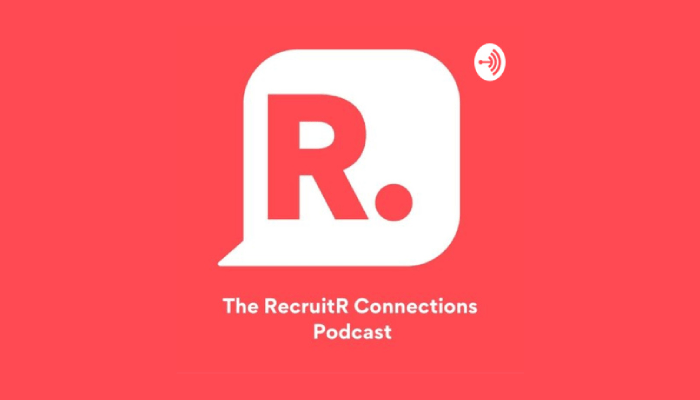There’s a lot to think about when you step into the role of interviewer. And if you’ve found yourself on this side of the table for the first time, you might be wondering – how do I structure my job interviews for success?
In fact, if you’re reading this post, that’s likely what you’re asking yourself – and you should be.
With so much to find out in so little time, having an effective structure to guide you through a job interview is crucial to its success.
So, below we’ve discussed our 5-stage interview structure and how you can apply it to your own job interviews.
Preparing for the job interview
Before we talk about how to structure your job interviews – it’s important you know the 3 foundations of any good interview: have set intentions, make the job seeker feel comfortable, build a rapport. These foundations have been fleshed out in further detail through this post, but we also wanted to discuss them here:
Have set intentions
You should always go into an interview with a set of intentions for that meeting. What do you want to understand about the person you’re interviewing? What personality traits does this person need to have to fit into your team? What skills do they need for success in the role? Put your detective pants on and push any insecurities you may have about asking too much to the side.
Make the jobseeker feel comfortable
The more comfortable the person you’re interviewing feels, the more information they’re likely to give up. As the person running the job interview, it’s up to you to establish a friendly, relaxed space for your interviewee right from the get-go.
Build a rapport
Remember, a good candidate will be assessing you just as much as you’re assessing them. They’ll want to know that you’re a good company to work for and that they can trust you to deliver on your promises. As the interviewer, it’s your job to build this rapport and leave a positive lasting impression on the person you’re interviewing. You want the candidate walking out of the door wanting to join your company, regardless of whether you want them to or no. So, treat every interview as an opportunity to promote your business!
The 5 stages of an effective job interview structure
Now that you know the 3 foundations of good interviewing, here is our 5-step structure for achieving interview success:
Step 1: Make the candidate feel comfortable
Don’t jump straight into the nitty-gritty when you first sit down for an interview. Spend the first 5 minutes making the person you’re interviewing feel comfortable.
Like we said earlier, the more comfortable they’re feeling, the more information they’re likely to give up.
So, offer them a drink, ask them about their day, share a bit about your day. Show an interest in the person beyond just talking to them about the role – this will also help you to establish a rapport with them from the get-go.
Step 2: Set your agenda
After making the jobseeker feel comfortable, gently set your agenda for the interview by letting them know how the meeting is going to run and what you’re looking to achieve from it.
Don’t go into too much detail here. A brief overview of the interview’s structure is enough.
You could lead into this stage by saying something like, “We’ll start today’s conversation by getting you to talk about X and then we’ll tell you about X before going on to X.”
Once you have a clear structure mapped out for your interviews (whether you choose to use this one or not), this will be an easy conversation to have. And something we recommend you do at the beginning of every interview to help manage expectations and keep the conversation on track.
Step 3: Understand the job seeker
With your agenda now set, it’s time to get the job seeker talking about themselves!
At this stage, you’re wanting to understand their key drivers and motivators.
So, ask them questions like:
- What’s your current role and responsibilities?
- What do you enjoy most about this role?
- What motivated you to apply for our role?
- What interests you most about the position?
- What are you hoping to gain from making the move?
- Where do you see your career going?
All of these questions provide an understanding of the person’s skill set, motivations and whether there’s an alignment between what they’re looking for and what you can offer.
Once you’ve been through all of the questions you’d like to ask about their key drivers and motivators – you can then start combing through their resume.
Go back through their work history and look at each of the jobs they’ve had and get them to tell you more about them. What did the company do? What did they do in that role? What things did they learn?
Ask them about the specifics of their role in each business and where they fit into the team.
Once a good understanding of their skillset has been established, this is also a good stage of your meeting to raise any behavioural interview questions you’d like answered.
If you’re scratching your head wondering what a behavioural question is, here’s a brief summary:
Behavioural interview questions assume that past behaviour is the best indication of what future behaviour will be like. Questions like this will generally begin with statements such as:
“Tell me about a time when…”
“Describe a time when…”
“Give me an example of…”
Using behavioural interview questions in your interviews will help you to gain an understanding of the job seeker in the context of their previous achievements, how they communicate, their analytical abilities and how they solve problems.
So, we recommend gaining some further knowledge on how to use them if you don’t already know!
Step 4: Tell them about your business
Now that you’ve gained a good understanding of the job seeker and what they’re looking for, it’s time to tell them more about your business and the role they’ve applied to.
Why do people like working with your business? What’s the company’s vision for the future? What’s your employee value proposition?
Try to weave in information about the culture of the business and the duties of the role that align with what you have established the job seekers motivators and values are. Provide subtle examples here. It doesn’t need to be a big oversell.
Step 5: Close out the interview
At this stage of the interview, you’re heading into the more logistical stuff. This is where you can start to close out the interview and communicate with the job seeker about what the next steps in the hiring process will be.
What are the timeframes in which you will decide whether to progress their application or not? Will there be second interviews? How and when will you contact them?
You should also get an understanding of their salary expectations and give them the opportunity to voice any questions or concerns they may have about the role or company.
To chat to RecruitR about any queries or concerns you have about conducting job interviews, you can contact Mahlah or Simone through the details on our Contact Us page.



